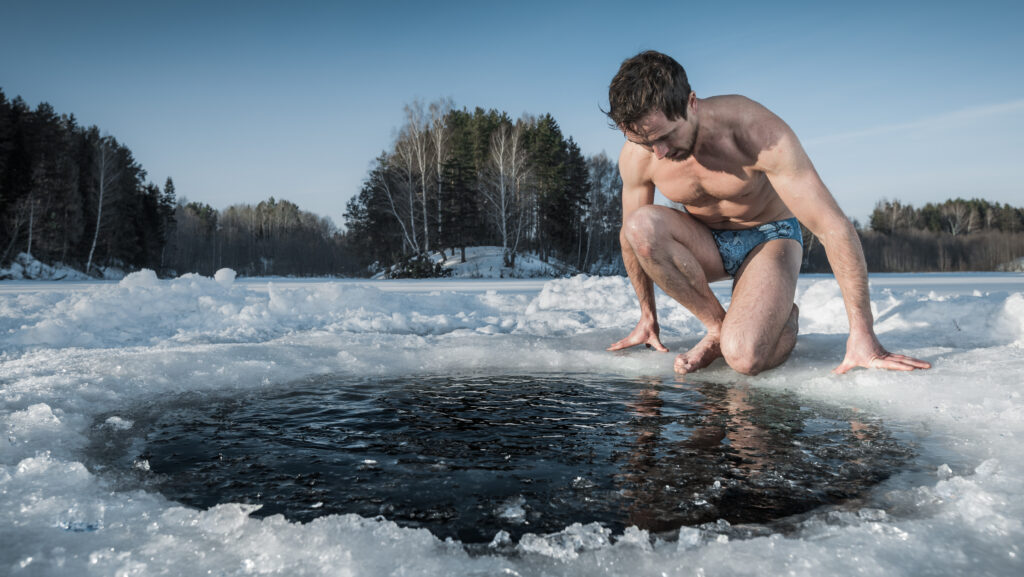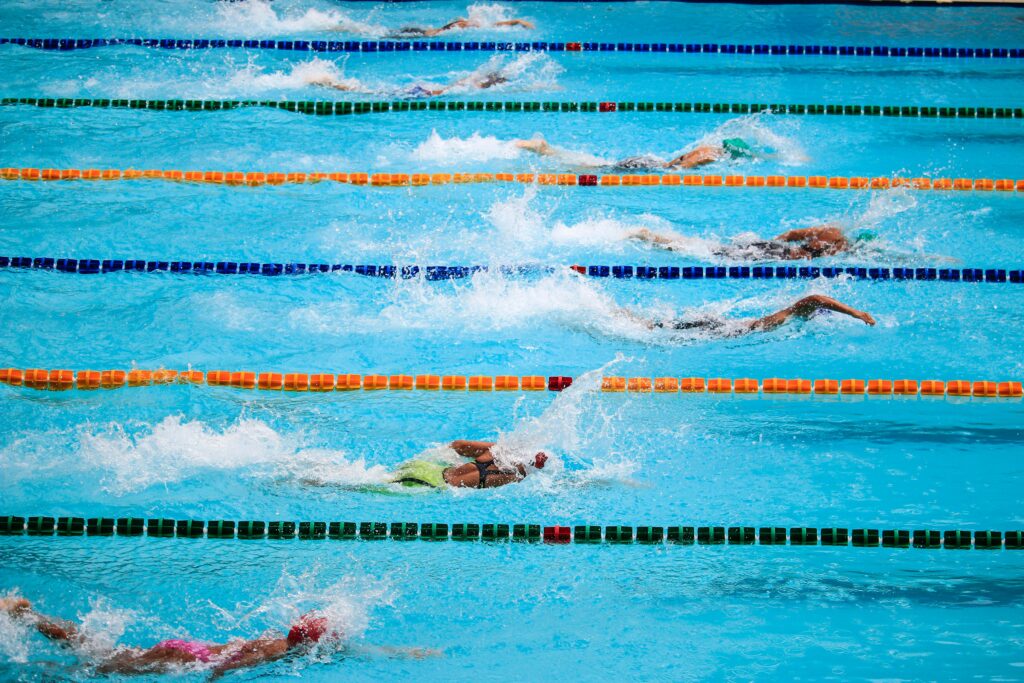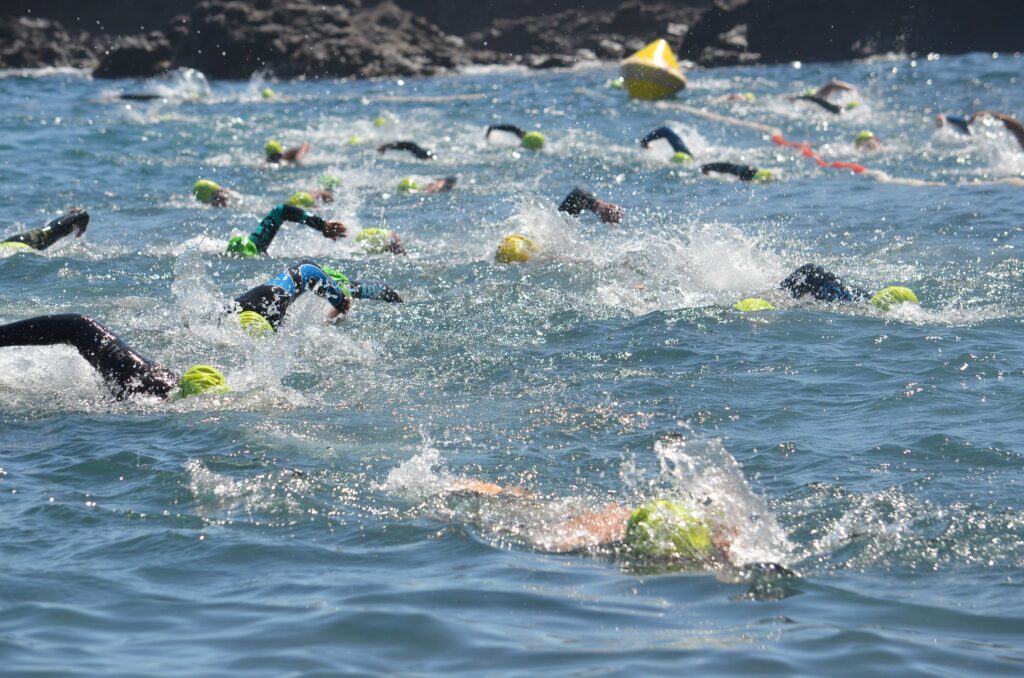Sprint training for the 50m butterfly requires specific sets that build both power and technique for this demanding stroke. Successful butterfly sprinters need workouts that develop explosive starts, efficient breathing patterns, and strong finishes without sacrificing proper form. The most effective butterfly sprint training combines power-focused drills like the “Power on – power off” technique with specialized kick sets and high-intensity, race-pace intervals that simulate competition demands.
For butterfly specialists, training must address the unique challenges of maintaining stroke rhythm while generating maximum propulsion. Many coaches incorporate special sets like the O’Neill Strength drill and BK-SK-FK-SK kick variations to build the specific muscle patterns needed for elite butterfly performance. These special butterfly training sets create the foundation for speed while maintaining proper technique through fatigue.
Sprint training also requires careful attention to recovery between high-intensity efforts. A well-designed butterfly sprint programme includes speed endurance sets with short, explosive bursts followed by adequate rest periods to maintain quality throughout. This approach allows swimmers to develop the specific energy systems needed for the 50m butterfly while reducing injury risk.

Key Takeaways
- Butterfly sprint training must balance power development with technical efficiency through specialised drills and race-pace intervals.
- Short, high-intensity sets with adequate recovery periods are essential for building the specific energy systems required for 50m butterfly performance.
- Consistent practice of start explosiveness, underwater dolphin kicks, and strong finishes significantly improves overall sprint butterfly times.
Understanding Sprint Training for 50m Butterfly
Sprint training for 50m butterfly demands specialised approaches that target explosive power, technical precision and appropriate energy system development. The shortest butterfly race requires both excellent technique and specific physiological adaptations to maximise performance.
Unique Demands of the 50m Butterfly Sprint
The 50m butterfly presents distinctive challenges compared to other swimming events. This all-out sprint requires maximum effort from start to finish with no opportunity for pacing or recovery. Swimmers must generate tremendous power whilst maintaining proper butterfly technique under extreme fatigue.
The race typically lasts between 22-30 seconds for competitive swimmers, requiring:
- Explosive power throughout the entire race
- Perfect timing between arm pulls and leg kicks
- Exceptional breath control (many elite swimmers take only 1-2 breaths)
- Strong underwater dolphin kicks after the start and turn
Sprint training for butterfly primarily focuses on training the nervous system, particularly the sympathetic nervous system which prepares the body for intense physical activity.
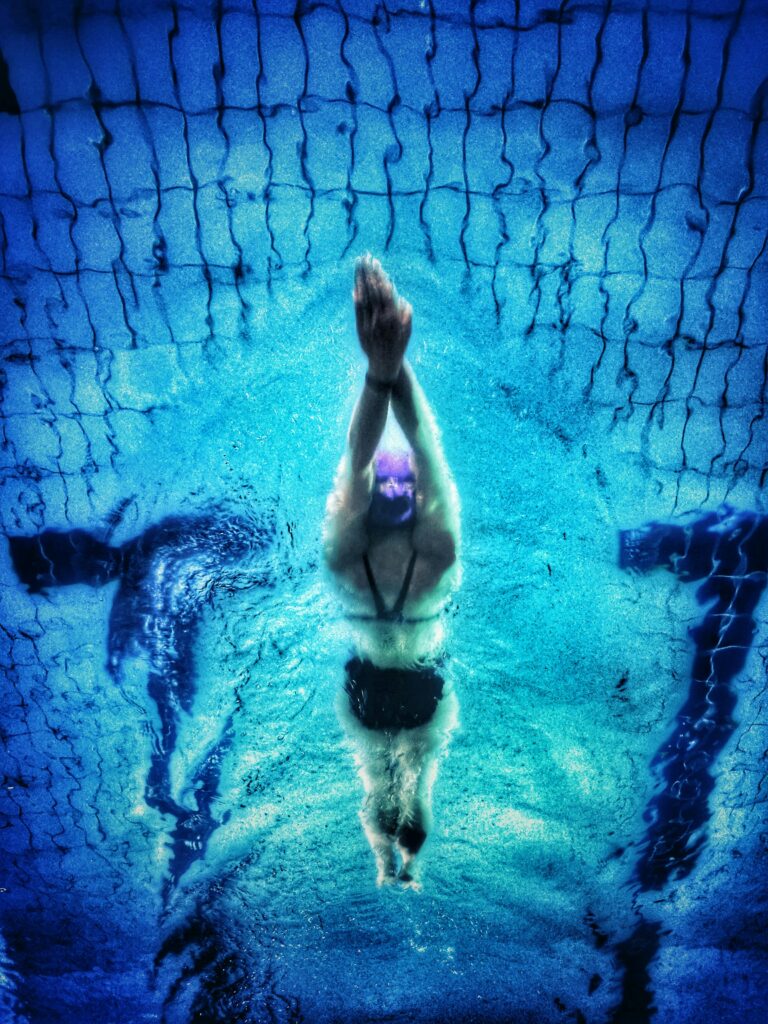
Role of Technique in Sprint Performance
Proper technique becomes even more crucial in butterfly sprints as poor form leads to increased drag and wasted energy. Even small technical errors can significantly impact race times.
Key technical elements include:
- Body position: Maintaining a horizontal position with hips near the surface
- Arm recovery: Quick, low recovery with arms clearing the water simultaneously
- Kick timing: Powerful dolphin kicks coordinated with arm entry
- Breathing pattern: Minimised breathing to maintain body position and momentum
Many coaches recommend specific butterfly drills like alternating 100s of butterfly and freestyle by 25 or 50 to build technique whilst managing fatigue. The “power on – power off” drill helps swimmers develop controlled speed variations.
Energy Systems Used in Butterfly Sprints
The 50m butterfly primarily relies on anaerobic energy systems due to its short duration and high intensity. Understanding these systems helps optimise training approaches.
The energy breakdown for 50m fly typically includes:
| Energy System | Contribution | Training Focus |
|---|---|---|
| ATP-PC System | 60-70% | Short, explosive efforts (5-15s) |
| Anaerobic Glycolysis | 30-40% | High-intensity intervals (15-60s) |
| Aerobic System | 0-10% | Recovery capacity between sets |
Training for 50m races must address all facets of performance including surface swimming technique and racing skills. Sprint butterfly training often incorporates dry-land strength exercises focused on the shoulders, core and legs to develop the power needed for explosive swimming.
Key Components of Effective Sprint Training Sets
Training effectively for a 50m butterfly sprint requires carefully designed workouts that balance technique, power, and speed. The right combination of exercises helps swimmers develop the specific fitness needed for explosive butterfly performances.
Optimal Set Design and Structure
When planning sprint training sets for 50m butterfly, focus on short, high-intensity efforts that match race demands. Sprint workouts should balance excellent body position, strength, technique, and speed. Consider incorporating these effective set structures:
- Straight sets: 8-12 × 25m butterfly at maximum effort with full recovery
- Combination sets: Alternating between 25m sprints and 50m at race pace
- Descending sets: 4 × 50m butterfly decreasing time with each repetition
Power-focused drills like butterfly kicks with fins or resistance bands help build specific muscle groups. Include technique work at the beginning of each session when swimmers are fresh. A well-structured set should progressively challenge swimmers while maintaining proper butterfly mechanics throughout.
Workout Intensity and Rest Intervals
For effective 50m butterfly training, intensity management is crucial. Training for sprints targets the nervous system, particularly the sympathetic nervous system that prepares the body for intense effort.
Rest intervals should be generous:
- Short sprints (25m): 60-90 seconds rest
- Race-pace work (50m): 2-3 minutes rest
- Power sets: 2-4 minutes between efforts
The key is ensuring complete or near-complete recovery between repetitions. This allows swimmers to maintain maximum effort and proper technique in each sprint. Limit high-intensity butterfly sessions to 2-3 times weekly to prevent fatigue and injury. Quality always trumps quantity in sprint training—fewer repetitions at maximum effort yield better results than more repetitions at submaximal intensity.
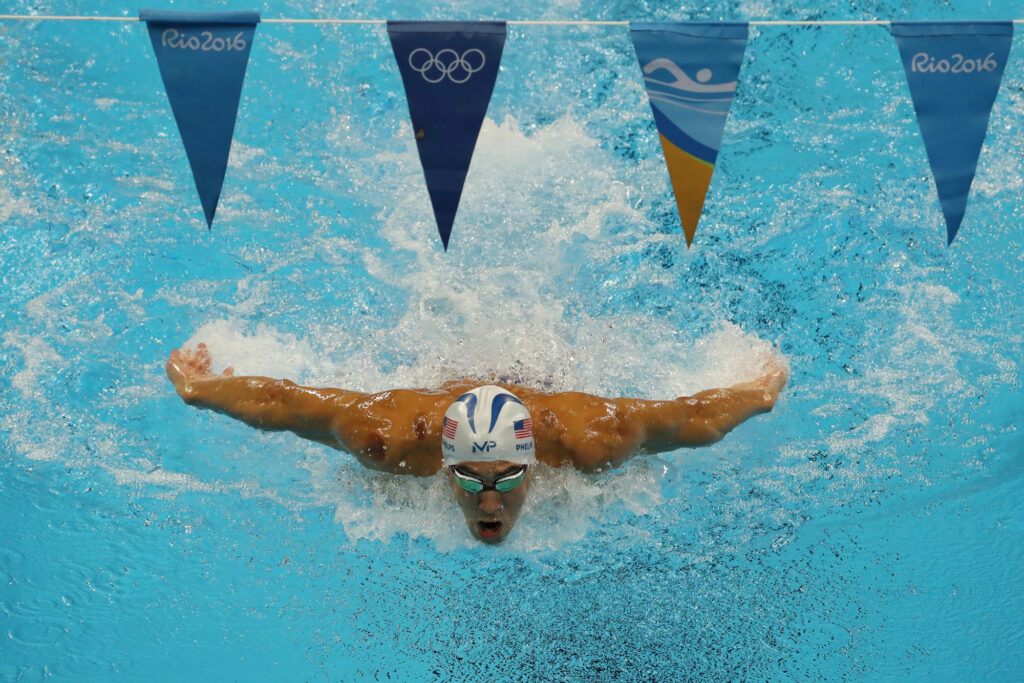
Measuring Stroke Count and Speed
Tracking specific metrics during sprint butterfly training provides valuable feedback for improvement. Technique, skills, and psychological features are vital factors for 50m training. Monitor these key performance indicators:
- Stroke count: Record strokes per 25m or 50m, aiming for consistency or reduction over time
- Stroke rate: Use a tempo trainer to develop optimal rhythm
- Split times: Track 15m, 25m, and 35m splits to identify fade points
For butterfly sprinters, the ideal combination is maximum speed with minimum stroke count. Record these metrics during training and compare them to competition performance. Underwater dolphin kicks should also be measured and optimised, as they can account for significant time gains in a 50m butterfly race. Consistent monitoring helps swimmers find their most efficient butterfly technique while maintaining explosive power throughout the race distance.
Sample Training Sets for the 50m Butterfly
Effective training for the 50m butterfly requires specific sets that develop explosive power, perfect technique and race-specific endurance. These workouts focus on maximum effort sprints and progressive interval training to build the capabilities needed for this demanding event.
All-Out Sprint Sets
Sprint training forms the cornerstone of 50m butterfly preparation, focusing on maximum velocity and power development. Here are several proven sprint sets:
10×25m Butterfly at Maximum Effort
- Interval: 1:00
- Focus: All-out speed with full recovery
- Technique cue: Maintain powerful entry and explosive kick
6×50m Butterfly Sprint Build
- First 25m: 85% effort
- Second 25m: 100% effort
- Rest: 2:00 between each
- Goal: Simulate race finish conditions
Power-on/power-off drills are particularly effective. Complete 8×25m butterfly alternating between maximum power for 12.5m and controlled swimming for 12.5m.
For race-specific training, try 20-30×25m butterfly on 20-30 seconds rest, focusing on holding the best possible speed throughout the set.
Ladder Sets for Power and Endurance
Ladder sets brilliantly combine sprint work with endurance training, creating the perfect stimulus for 50m butterfly performance.
Descending Ladder
- 1×50m butterfly (90% effort)
- 2×25m butterfly (95% effort)
- 4×12.5m butterfly (100% effort)
- Rest: 1:00 between each distance
- Repeat 3 times with 3:00 rest between rounds
Butterfly Power Pyramid
- 25m butterfly (fast)
- 50m freestyle (moderate)
- 75m butterfly (fast)
- 50m freestyle (moderate)
- 25m butterfly (all-out sprint)
- Rest: 30 seconds between each
Sprint endurance sets help develop the ability to maintain speed through fatigue. Try 8×50m butterfly with the first 15m at race pace, middle 20m at moderate effort, and final 15m at race pace again.
Mix in short-rest repeats like 8×25m butterfly on 20 seconds to develop the anaerobic capacity necessary for sustained butterfly sprinting.
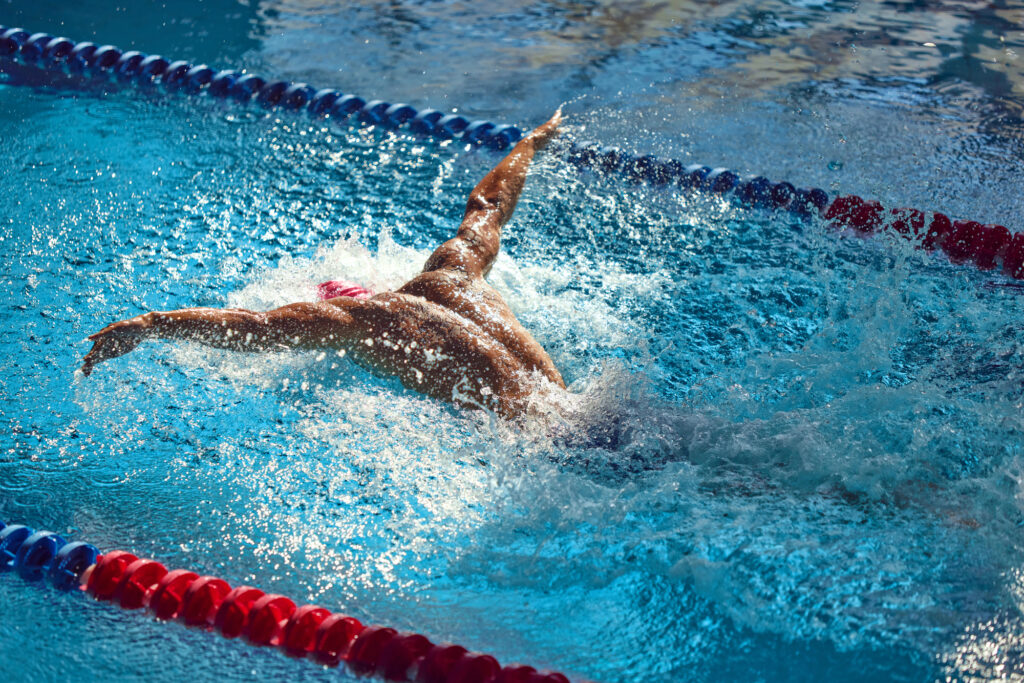
Incorporating Technique and Drill Sets
Mastering the butterfly stroke requires deliberate practice with technique-focused drills and balanced training approaches. Proper drill progressions build the foundation for explosive sprinting whilst pull and kick sets develop the power needed for competitive 50m butterfly performances.
Butterfly Drill Progressions
Butterfly technique development begins with foundational drills that isolate key movement patterns. The BK-SK-FK-SK drill (back kick, side kick, front kick, side kick) helps swimmers establish proper undulation timing without arm movement concerns.
For arm technique, try the “power on – power off” drill where you alternate between powerful and relaxed strokes. This builds stroke awareness and control needed for sprint racing.
Single-arm butterfly drills improve stroke symmetry and timing. Swim 25m with right arm only, then 25m with left arm, focusing on maintaining consistent body position.
The “O’Neill Strength drill” is excellent for sprint-specific training. It involves three butterfly strokes followed by six dolphin kicks underwater, building power and underwater efficiency crucial for 50m races.
Integration of Pull and Kick Sets
Balanced butterfly training requires thoughtful integration of pull and kick elements. For kick sets, try 8×25m butterfly dolphin kick with a board, focusing on generating power from the core, not just the legs.
Incorporate progressive kick sets like:
- 4×50m dolphin kick (15 seconds rest)
- 4×25m sprint dolphin kick (30 seconds rest)
For pull-focused work, use a pull buoy and consider:
- 6×50m butterfly pull with paddles (20 seconds rest)
- 4×25m butterfly sprint pull (40 seconds rest)
Alternating butterfly and freestyle by 25m within a set helps maintain technique whilst managing fatigue. Try 8×100m alternating 25m butterfly/25m freestyle, holding strong butterfly technique throughout.
For sprint-specific integration, challenge yourself with advanced butterfly sprint sets like 6×50m butterfly sprints with 30 seconds rest between efforts.
Stroke Variation and Combination Sets
Incorporating varied stroke combinations enhances butterfly sprint performance by improving stroke efficiency, rhythm transitions and overall swimming versatility. These specialised sets help develop the specific muscle groups needed for explosive butterfly sprints whilst preventing stroke monotony.
Alternating Butterfly and Freestyle Sets
Alternating butterfly and freestyle swimming creates an effective training pattern for 50m butterfly specialists. These combinations allow swimmers to maintain higher-intensity butterfly work without excessive fatigue.
A popular set includes 6×50m swims alternating 25m butterfly and 25m freestyle with 20-30 seconds rest between repetitions. This format helps maintain butterfly technique while using freestyle as active recovery.
Try this progressive set:
- 8×25m butterfly sprint/25m freestyle recovery (30s rest)
- 6×25m butterfly sprint/25m freestyle drill (25s rest)
- 4×25m butterfly sprint/25m freestyle kick (20s rest)
For race-specific training, swimmers can use descending intervals where each butterfly portion becomes faster whilst maintaining proper technique. This trains the body to perform explosive butterfly movements even when fatigued.
Integrating IM Sets for Versatility
Individual Medley (IM) sets offer butterfly sprinters valuable training variety whilst developing all-around swimming abilities. Stroke and IM variation workouts help swimmers maintain technique across multiple strokes.
An effective IM set for butterfly sprinters includes:
- 8×50m butterfly/backstroke transition (focus on streamlined turns)
- 8×50m backstroke/breaststroke combination
- 8×50m breaststroke/freestyle swimming
- 8×25m butterfly sprint (all-out effort)
IM training benefits butterfly sprinters by developing complementary muscle groups and creating balanced strength. The backstroke portion develops similar back muscles to butterfly whilst breaststroke improves the powerful leg kick needed for butterfly.
Coaches often implement 20-30×25m butterfly repeats on short rest (approximately 20 seconds) after IM sets to simulate race-pace finishing whilst fatigued.
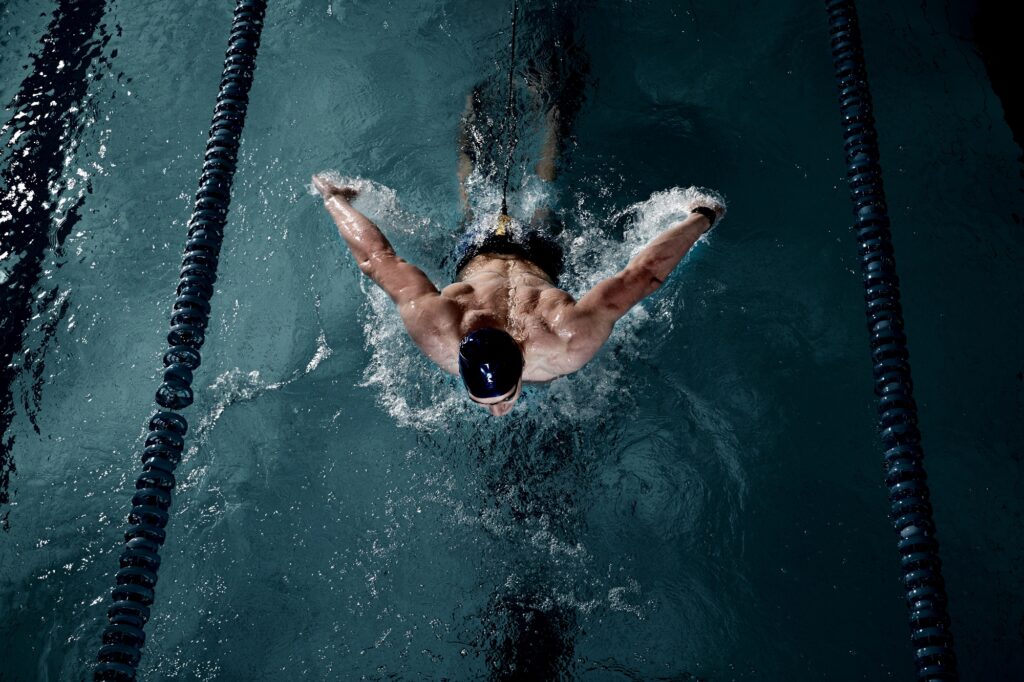
Supporting Elements: Warm-Up, Land Warm-Up, and Flexibility
Proper preparation before sprint butterfly events significantly improves performance and prevents injuries. A well-structured warm-up routine activates key muscle groups and primes the nervous system for explosive swimming.
Water-Based Warm-Up Routines
Sprint butterfly swimmers need targeted water warm-ups that gradually increase intensity. Begin with 400-600m of mixed-stroke swimming at a relaxed pace, focusing on good technique rather than speed. Include 4-6 sets of 25m butterfly drills that isolate key movement patterns such as single-arm butterfly, butterfly kick on side, and “three-stroke, one-glide” drill.
Studies comparing in-water warm-ups show they’re most effective when followed by progressive build-ups. Include 4-6 x 25m butterfly with increasing speed (50%, 75%, 85%, 95% effort).
Finish your water warm-up with 2-3 race-pace efforts over 15m with full recovery between each. This activates fast-twitch muscle fibres without causing fatigue. Maintain proper body position throughout—high hips, engaged core, and relaxed neck.
Land Warm-Up and Mobility Exercises
Land-based activation before racing is crucial for butterfly sprinters. Research on elite sprint swimmers shows dryland exercises enhance performance when done after pool warm-up but before racing.
Essential Land Warm-Up Elements:
- 5-8 minutes of light jogging or skipping to raise core temperature
- 10-12 arm swings forward/backward (mimicking butterfly recovery)
- 2-3 sets of 10-15 medicine ball slams for explosive power
- 8-10 resistance band pulls for shoulder activation
Focus on dynamic movements rather than static holds. Use resistance bands to perform external/internal shoulder rotations (2 sets of 12-15 repetitions). This helps stabilise the shoulder joint during the powerful butterfly pull phase.
Perform these exercises 15-20 minutes before your race for optimal nervous system activation.
Flexibility Work for Butterfly Sprinters
Targeted flexibility work enhances your butterfly sprint performance by improving range of motion in key areas. Focus on dynamic stretching rather than static stretching immediately before racing.
The butterfly stroke demands exceptional mobility in the shoulders, chest, and lower back. Daily flexibility routines should include:
- Shoulder circles and wall slides (2 sets of 10)
- Cat-cow stretches for spinal mobility (8-10 repetitions)
- Chest stretches using doorways or corner walls (hold 15-20 seconds)
- Ankle mobility work with foot circles and calf stretches
For pre-race preparation, incorporate gentle shoulder and hip mobility exercises. Training for butterfly efficiency requires consistent flexibility work to maintain proper body position throughout the stroke cycle.
Remember that flexibility work is most effective when tissues are already warm, so perform these exercises after your water-based warm-up for maximum benefit.

Starts, Turns, and Finishes for Maximum Speed
The technical elements of a 50m butterfly sprint often make the difference between winning and losing. Perfect execution of starts, turns, and finishes can shave crucial tenths of seconds off your time.
Optimising the Butterfly Start
The butterfly start demands explosive power and precise technique. Position your feet shoulder-width apart with toes curled over the edge of the block. Grip the front edge firmly with your hands positioned either inside or outside your feet.
When the signal sounds, drive your hips forward rather than upward. This creates a flatter, more streamlined entry that reduces drag. Your arms should swing forward in a powerful arc, extending fully at entry.
The optimal entry angle is between 30-40 degrees. Too steep and you’ll dive too deep; too shallow and you’ll belly flop. After entry, maintain a tight streamline with arms extended, hands overlapped, and biceps covering your ears.
Initiate your underwater dolphin kicks immediately. Research shows the first underwater phase can be up to 60% faster than surface swimming. Most elite butterfliers execute 4-8 powerful dolphin kicks before breaking the surface.
Effective Turn Techniques
The butterfly turn can make or break your 50m race. Approach the wall at full speed, timing your stroke so you can touch with both hands simultaneously at full extension.
Two-hand touch must be:
- Quick and light
- At water level (not deep)
- With hands shoulder-width apart
After touching, tuck your chin and execute a powerful somersault. Your knees should come close to your chest for a tight rotation. Push off the wall in a perfect streamline position, slightly on your side.
The push-off depth should be 0.5-0.7 metres below the surface—deep enough to avoid turbulence but not so deep that you waste energy returning to the surface. Initiate powerful dolphin kicks immediately after push-off, maintaining rigid body position with minimal resistance.
Powerful Sprint Finishes
The final 5 metres of your 50m butterfly sprint requires perfect technique despite extreme fatigue. Keep your head down through your final stroke—looking forward creates drag and slows momentum.
Time your finish so your arms are fully extended at the wall. Many races are lost when swimmers take a short, choppy final stroke instead of gliding to the touch. Maintain stroke rhythm even as you approach the wall.
Finish technique checklist:
- Keep butterfly stroke rhythm consistent
- Drive forward, not upward
- Touch with both hands simultaneously
- Keep legs kicking until the final touch
Don’t breathe during the final 5 metres. Lifting your head creates drag and costs valuable hundredths of a second. Instead, focus on driving your chest forward and down to propel yourself to the wall with maximum efficiency.
Essential Swim Gear for Sprint Training
The right equipment can dramatically improve your 50m butterfly sprint training by enhancing technique, building specific muscle groups, and simulating race conditions. Proper gear selection helps swimmers develop explosive power and maintain proper form throughout intensive sprint sessions.
Tools for Technique and Speed Development
Swim paddles are crucial for butterfly sprinters as they increase resistance and build upper body strength. Small-to-medium sized paddles work best for butterfly, helping to perfect the catch phase while preventing shoulder strain.
Short fins (also called zoomers) provide additional propulsion and help maintain proper body position during sprint sets. They’re particularly effective for developing the powerful butterfly kick needed for explosive starts and turns.
Resistance bands are excellent for dry-land training, strengthening the shoulder muscles that power the butterfly stroke. These simple elastic tools help warm up muscles and prevent common shoulder injuries that can derail sprint training.
Tempo trainers help swimmers develop consistent stroke rhythm and pacing—critical for maintaining form during the intense effort of a 50m butterfly sprint.
Choosing the Right Equipment
Quality swim goggles are essential for sprint butterfly training. Choose a pair with minimal drag and a secure fit that won’t shift during explosive turns and dives. Goggles are fundamental equipment for all swimmers, from beginners to Olympic champions.
When selecting equipment for butterfly sprint training, prioritise comfort and durability. Ill-fitting gear can disrupt technique and potentially cause injury during intensive sets.
Match your equipment to your current ability level. Advanced swimmers benefit from greater resistance tools, whilst developing sprinters should focus on equipment that reinforces proper technique first.
Create a training gear rotation for different phases of your sprint training. For example, use paddles and fins together for speed work, and snorkels with tennis balls for drill-focused sessions that improve body position.
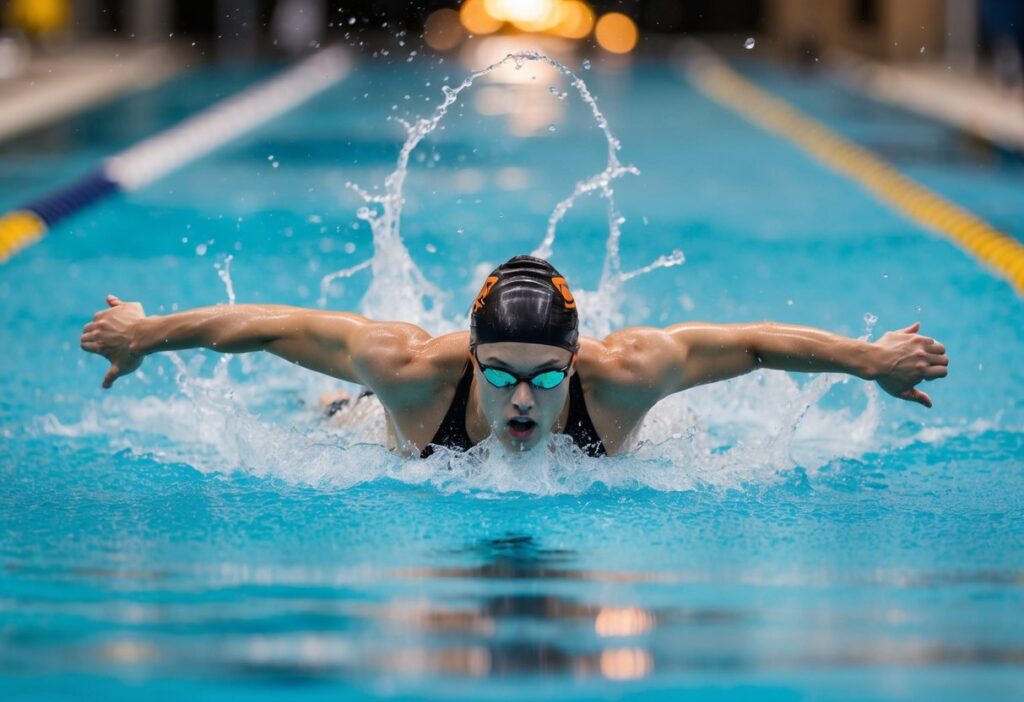
Enhancing Performance Through Recovery and Balance
Recovery periods and training balance are just as crucial as intense sprint workouts for 50m butterfly swimmers. The right approach to recovery and workout planning helps athletes achieve peak performance while preventing burnout and injury.
Active Recovery Approaches
Active recovery sessions are essential for butterfly sprinters after intense training. Light swimming using freestyle or backstroke at 40-60% effort helps flush lactic acid from muscles without adding stress. These sessions should last 15-20 minutes.
Explosive pace training for butterfly requires proper recovery to maintain performance quality.
Other effective recovery methods include:
- Water-based activities: Easy kicking sets with a board
- Dry-land options: Light stretching or yoga focusing on shoulders and back
- Contrast therapy: Alternating hot and cold immersion for muscles
Most elite butterfly sprinters incorporate 2-3 dedicated recovery sessions weekly. This approach enables better adaptation to high-intensity workouts and reduces injury risk.
Balancing Workload in Sprint Training
Proper training balance prevents overtraining while maximising speed development. A well-structured programme for 50m butterfly specialists should follow a 3:2 ratio of high-intensity to moderate training days.
Sprint-focused training must be balanced with adequate recovery to sustain powerful strokes. Elite coaches recommend limiting pure sprint sets to 3 sessions weekly.
Track your training load with these metrics:
| Metric | Target Range | Warning Signs |
|---|---|---|
| RPE (1-10) | 7-9 for sprint days | Consistently over 9 |
| Heart rate | 85-95% max during sets | Inability to reach 85% |
| Calorie burn | 500-700 per session | Dramatic decrease |
Including technique-focused days between power sessions creates balance in training stress. Many successful butterfly sprinters incorporate one power and strength session followed by a skills day.

